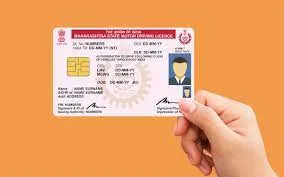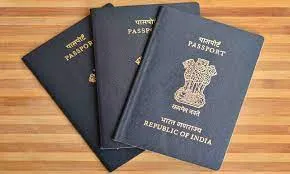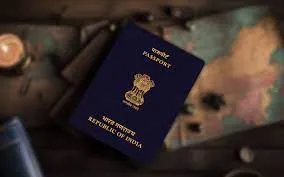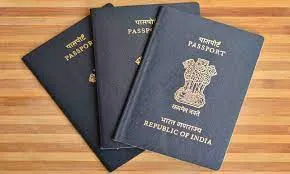Driving License Application Process:
Applying for a driving license is a significant milestone in one’s journey towards independence and mobility. A driving license serves as a legal document issued by the government that permits individuals to operate motor vehicles on public roads. In this comprehensive guide, we’ll explore the process of applying for a driving license, including eligibility criteria, required documents, application methods, online vs. offline options, frequently asked questions, and tips for a smooth application experience.
Understanding the Importance of a Driving License
A driving license is more than just a piece of plastic; it’s a symbol of freedom and responsibility. Here are some key reasons why obtaining a driving license is important:
Legal Requirement:
Driving without a valid license is illegal and punishable by law in most countries. A driving license serves as proof that the holder has undergone the necessary training and testing to operate a motor vehicle safely and responsibly.
In essence, driving without a valid license is considered a violation of traffic laws and regulations. It is punishable by law and can result in severe consequences, including fines, penalties, and legal repercussions. The requirement for a driving license is implemented to ensure the safety of all road users, as well as to regulate and monitor the operation of motor vehicles.
To obtain a driving license, individuals typically need to fulfill certain prerequisites set forth by the relevant licensing authority. These prerequisites may include:
- Minimum Age Requirement: Most jurisdictions specify a minimum age for individuals to be eligible to apply for a driving license. This age requirement varies depending on the type of vehicle and the licensing regulations of the respective country or state.
- Completion of Training and Testing: Prospective drivers are usually required to undergo training and pass both theoretical and practical driving tests to demonstrate their understanding of traffic rules, road signs, and safe driving practices. The training programs aim to equip individuals with the necessary knowledge and skills to operate vehicles safely on public roads.
- Compliance with Legal Formalities: Applicants must comply with all legal formalities and procedures established by the licensing authority. This may include providing valid identification documents, proof of residency, and other required paperwork.
- Payment of Fees: There are often fees associated with the application process for obtaining a driving license. Applicants are required to pay these fees as per the prescribed regulations.
The legal requirement for a driving license underscores the importance of responsible driving behaviour and adherence to traffic laws. It serves as a mechanism for regulating and monitoring the operation of motor vehicles, thereby contributing to overall road safety and public welfare.
Safety and Skill Certification:
Obtaining a driving license requires individuals to demonstrate their knowledge of traffic rules, road signs, and safe driving practices. It serves as a certification of their driving skills and competence behind the wheel.
Safety Certification:
- Understanding Traffic Laws: Before being granted a driving license, individuals must demonstrate a comprehensive understanding of traffic laws and regulations. This includes knowledge of speed limits, right-of-way rules, traffic signals, and road signs.
- Awareness of Road Hazards: Safety certification requires drivers to recognize and respond to potential road hazards effectively. This includes understanding how to navigate intersections, anticipate the actions of other drivers, and safely handle adverse weather conditions.
- Risk Management: Safe drivers are adept at assessing risks and making informed decisions to mitigate potential dangers on the road. They understand the importance of maintaining a safe following distance, using turn signals, and avoiding distractions while driving.
- Emergency Preparedness: Safety certification encompasses the ability to respond calmly and effectively in emergency situations. This includes knowing how to react to sudden obstacles, perform evasive maneuvers, and administer basic first aid if necessary.
Skill Certification:
- Vehicle Handling: Skill certification evaluates a driver’s ability to operate a motor vehicle confidently and proficiently. This includes skills such as steering control, acceleration, braking, and maneuvering in tight spaces.
- Parking Proficiency: Skilled drivers can park their vehicles safely and accurately in various parking scenarios, including parallel parking, perpendicular parking, and angle parking.
- Defensive Driving Techniques: Skill certification emphasizes the importance of defensive driving techniques, such as anticipating potential hazards, maintaining situational awareness, and adapting driving behaviour to changing road conditions.
- Observation and Communication: Skilled drivers are attentive observers of their surroundings and effective communicators with other road users. They use rear view mirrors, side mirrors, and turn signals to signal their intentions and communicate with other drivers.
Identity Verification:
A driving license serves as a primary form of identity verification, containing personal details such as name, date of birth, photograph, and signature. It can be used for various official purposes, including opening bank accounts and applying for other government-issued documents.
.
- Documentation: Applicants are required to submit various documents as proof of their identity. These documents typically include government-issued identification such as a passport, Aadhaar card, voter ID, or driver’s license. The documents must be original and valid, with no alterations or discrepancies
- Biometric Data: In some jurisdictions, biometric data such as fingerprints or facial recognition may be used for identity verification purposes. Applicants may be required to undergo biometric scanning as part of the application process to ensure that their identity matches the information provided in the documents.
- Verification Process: The submitted documents are carefully reviewed and verified by the licensing authority to confirm the applicant’s identity. This may involve cross-checking the information provided with government databases or conducting background checks to ensure authenticity.
- In-Person Verification: In many cases, applicants are required to appear in person at the licensing authority’s office for identity verification. This allows licensing officials to visually confirm the applicant’s identity and compare their appearance with the photograph on the submitted documents.
- Security Features: Modern driving licenses often include security features such as holograms, watermarks, and micro printing to prevent counterfeiting and tampering. These features help ensure the integrity of the license and enhance identity verification.
- Stringent Protocols: Licensing authorities adhere to stringent protocols and procedures to maintain the integrity of the identity verification process. Any discrepancies or inconsistencies in the applicant’s documents are thoroughly investigated to prevent fraudulent activity.
International Recognition:
A valid driving license is recognized internationally, allowing individuals to drive in foreign countries without the need for additional permits or licenses in most cases.
International recognition of a driving license is essential for individuals who wish to drive in foreign countries. It refers to the acceptance and validity of a driving license issued by one country in other countries around the world. International recognition allows travellers to use their domestic driving licenses to legally operate motor vehicles in foreign jurisdictions without the need for additional permits or licenses. Here’s how international recognition works for driving licenses:
- Mutual Recognition Agreements: Many countries participate in mutual recognition agreements or conventions that establish reciprocal recognition of driving licenses between member states. These agreements facilitate the seamless exchange of driving privileges for residents of participating countries.
- Validity Period: The validity period of a driving license for international recognition may vary depending on the regulations of the destination country. Some countries recognize foreign driving licenses for a limited duration, while others may accept them indefinitely.
- Requirements for Recognition: To be eligible for international recognition, a driving license must meet certain criteria established by the destination country. These criteria may include the type of vehicle covered by the license, the age of the driver, and any specific endorsements or restrictions.
- International Driving Permit (IDP): In some cases, traveller’s may be required to obtain an International Driving Permit (IDP) in addition to their domestic driving license. An IDP is a document that translates the information on a driver’s license into multiple languages, making it easier for authorities in foreign countries to understand and verify the driver’s credentials.
- Verification Process: When driving in a foreign country, traveller’s may be asked to present their domestic driving license and, if applicable, an IDP to local authorities upon request. These documents are used to verify the driver’s identity, driving privileges, and eligibility to operate motor vehicles in the host country.
- Special Considerations: Some countries have specific requirements or restrictions for foreign drivers, such as minimum age limits, mandatory insurance coverage, or additional documentation. Travelers should familiarize themselves with the driving regulations and road laws of the countries they plan to visit to ensure compliance and avoid any legal issues.
Insurance Purposes:
Insurance companies often require drivers to possess a valid driving license to provide coverage in case of accidents or other incidents.
Insurance purposes play a significant role in the context of a driving license. Having a valid driving license is often a prerequisite for obtaining auto insurance coverage. Insurance companies use driving licenses as a means of assessing an individual’s eligibility for insurance and determining the terms of coverage. Here’s how driving licenses relate to insurance purposes:
- Proof of Driving Eligibility: A driving license serves as proof that an individual has met the necessary requirements to operate a motor vehicle legally. Insurance companies typically require applicants to provide a valid driving license when applying for auto insurance coverage. The license demonstrates that the applicant has undergone training, passed driving tests, and is authorized to drive on public roads.
- Risk Assessment: Insurance companies assess the risk associated with insuring a driver based on various factors, including their driving history, experience, and behaviour on the road. A driving license provides insurers with essential information about the driver’s qualifications and helps them evaluate the level of risk involved in providing coverage.
- Determining Premiums: Insurers may use information from a driver’s license, such as their age, driving experience, and record of traffic violations, to calculate insurance premiums. Drivers with clean driving records and extensive experience may be eligible for lower premiums, while those with a history of accidents or violations may face higher rates.
- Coverage Requirements: In many jurisdictions, having a valid driving license is a legal requirement for driving and obtaining auto insurance coverage. Drivers who operate vehicles without a valid license may not be eligible for insurance benefits in the event of an accident or claim. Additionally, insurance policies may include clauses that invalidate coverage if the driver is found to be operating a vehicle unlawfully.
- Driver Identification: Insurance policies are issued in the name of the licensed driver listed on the policy. The details provided on the driving license, such as the driver’s name, date of birth, and license number, are used to identify the insured party and ensure accurate coverage.
- Claims Processing: In the event of an accident or insurance claim, the driver’s license may be used to verify the identity of the insured party and validate their eligibility for coverage. Insurers may request a copy of the driver’s license as part of the claims processing procedure to confirm the driver’s credentials and assess liability.
Eligibility Criteria for Driving License Application
To apply for a driving license, individuals must meet the following eligibility criteria:
- Age: Applicants must meet the minimum age requirement specified by the licensing authority in their jurisdiction. The minimum age for obtaining a driving license varies depending on the type of vehicle and the category of license.
- Residency: Applicants must be residents of the country or state where they are applying for a driving license. Proof of residency may be required as part of the application process.
- Training and Testing: Applicants must undergo the necessary training and testing as prescribed by the licensing authority to demonstrate their knowledge of traffic rules, road signs, and safe driving practices.
Documents Required for Driving License Application
When applying for a driving license, applicants must submit the following documents:
- Proof of Identity: Aadhaar card, passport, voter ID, or any other government-issued photo ID.
- Proof of Address: Aadhaar card, utility bill, rental agreement, or any other document containing the applicant’s address.
- Date of Birth Proof: Birth certificate, school leaving certificate, or any other document containing the applicant’s date of birth.
- Passport-size Photographs: Recent color photographs of the applicant meeting the specified dimensions and background requirements.
- Learner’s License: If applying for a permanent driving license, applicants must submit their learner’s license as proof of having completed the required training and testing.
Methods of Applying for a Driving License
There are two primary methods for applying for a driving license: online and offline.
Online Application:
Driving license apply online is the most convenient and streamlined option. The process involves visiting the official website of the licensing authority, filling out the online application form, uploading scanned copies of the required documents, and scheduling an appointment for the driving test. Once the application is processed and the driving test is passed, the driving license is issued and dispatched to the applicant’s address.
Offline Application:
Applying for a driving license offline involves visiting the nearest Regional Transport Office (RTO) or licensing authority’s office, obtaining a physical application form, filling it out manually, and submitting it along with photocopies of the required documents and photographs. Applicants must then schedule a driving test appointment at the RTO. Once the driving test is passed, the driving license is issued and provided to the applicant.
Step-by-Step Guide to Applying for a Driving License Online
Step 1: Visit the Licensing Authority’s Website
Go to the official website of the Regional Transport Office (RTO) or the designated licensing authority in your jurisdiction.
Step 2: Register/Login to Your Account
If you’re a first-time user, register on the website to create an account. If you already have an account, log in using your credentials.
Step 3: Fill Out the Online Application Form
Fill out the online driving license application form with accurate personal and contact details, including name, date of birth, address, contact number, and email ID.
Step 4: Upload Supporting Documents
Upload scanned copies of supporting documents such as proof of identity, proof of address, proof of date of birth, and learner’s license (if applicable) as specified in the application form.
Step 5: Pay the Application Fee
Pay the applicable driving license application fee online using debit/credit cards, net banking, or other available payment methods.
Step 6: Schedule a Driving Test Appointment
Schedule an appointment for the driving test at the designated Regional Transport Office (RTO) or testing center. Choose a convenient date and time slot for the test.
Step 7: Prepare for the Driving Test
Prepare for the driving test by practicing driving skills and familiarizing yourself with traffic rules, road signs, and safe driving practices.
Step 8: Attend the Driving Test
On the scheduled date, attend the driving test at the designated RTO or testing center. Demonstrate your driving skills and knowledge of traffic rules to the testing officer.
Step 9: Track Application Status
After passing the driving test, track the status of your driving license application online using the reference number provided. You’ll receive updates on the progress of your application.
Step 10: Receive Driving License
Once the application is processed and the driving test is passed, the driving license will be dispatched to the address provided in the application form. You can expect to receive it within the specified timeframe via postal mail.
Frequently Asked Questions (FAQs) About Driving License Application
Q1: What is a learner’s license, and do I need one to apply for a driving license?
A1: A learner’s license is a temporary license that allows individuals to practice driving under supervision before obtaining a permanent driving license. In many jurisdictions, a learner’s license is a prerequisite for applying for a permanent driving license.
Q2: How long is a driving license valid for?
A2: The validity of a driving license varies depending on the jurisdiction and the type of vehicle. In most cases, driving licenses are valid for a certain number of years and can be renewed upon expiry.
Q3: Can I drive in other countries with my domestic driving license?
A3: In many cases, domestic driving licenses are recognized internationally and allow individuals to drive in other







